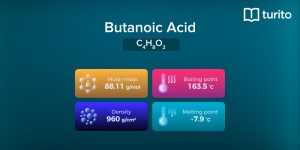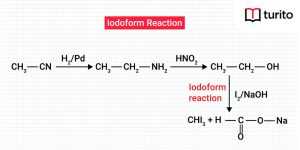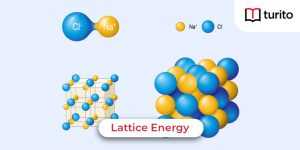Peptides
The term “peptide” is derived from the Greek word “peptos,” which means “digested.”
Peptides are protein fragments that are smaller in size. They are small sequences (between 2-50 amino acids) joined together by a polypeptide chain.
Oligopeptides, which include dipeptides, tripeptides, and tetrapeptides, are chains of less than ten or fifteen amino acid linkages. Many peptides are recognized and categorized according to their origins and actions. A polymer is a superior categorization of a peptide.
This article explains what a peptide is, peptide structure, categorization, characteristics, and well-known peptides examples.
What is a peptide?
Before we can discuss what a peptide is, we must first define proteins. Proteins are the most numerous organic molecules in biological systems and are far more diversified in form and function than some of the macromolecule families. This protein possesses a link in its amino acid monomer, which is highly diversified and unusual. The peptide bond is the name given to this type of connection.
Since peptides are tinier and more divided than proteins, they are more quickly absorbed by the human body.
Furthermore, peptides may permeate the skin and intestines more easily, allowing them to enter circulation more swiftly.
Peptides can be obtained from a variety of plant and animal protein sources, including the following:
- Eggs
- Meat, fish, and shellfish
- Lentils with beans
- Beans from Soya
- Oats
- Flaxseed
- Hemp seedlings
- Wheat
Classification of Peptides on the Basis of Organization
Peptides are divided into two types: oligopeptides and polypeptides. The union of amino acids (4 amino acids) is required to produce any of these. Let us now categorize their forms:
- Linear Peptides – These peptides feature a free NH2 end and a free COOH end.
- Branched Peptides – These peptides are distinguished by the branching of one or more amino acids on a linear peptide chain.
- Cyclic peptides do not have an N-terminus or a C-terminus.
- Semi-Cyclic Peptides are peptides that have only one end. It indicates that if they have an N-terminal finish, the final amino acid’s α-COOH is coupled with the ε-NH2 of an endopeptidase lysine.
Classification of Peptides on the Basis of Function
Peptides have been categorized based on their origins and functions. A few of its primary classes are detailed further below –
- Ribosomal Peptides – Ribosomal peptides are proteolyzed. They act as hormones in higher eukaryotes. These include antimicrobial peptides, tachykinin peptides, and intestinal and pancreatic.
- Peptones are generated due to the proteolytic cleavage of meat and dairy. They are used to cultivate fungus and bacteria for a variety of reasons.
- Milk peptides are generated when milk protein is digested. They are also generated during natural fermentation.
- Dipeptides are created by joining two amino acids together with a peptide bond.
- Tripeptides are generated by linking three amino acids together with peptide bonds. Ophthalmic acid and glutathione are examples.
- Oligopeptides are created by the peptide bonding of more than two and less than 20 amino acids.
Peptide Structure
The structure of a peptide bond is a planar, transverse, and strong structure. It also depicts a figure with a partial double bond. The peptide bond’s coplanarity refers to the partial exchange of two positively charged ions between the amide nitrogen and carboxyl oxygen.
The peptide bond’s elements C, H, N, and O are in the same plane. For example, the amide group’s hydrogen ion and the carboxyl oxygen molecule are trans to one another.
Types of Peptide Bonds
The following table illustrates the different types of peptide bonds:
|
Peptide Class |
Peptide Bond |
| Dipeptide |
2 amino acid units |
|
Tripeptide |
3 amino acid units |
|
Tetrapeptide |
4 amino acid units |
|
Oligopeptide |
<10 amino acid units |
| Polypeptide |
>10 amino acid units but <100 |
|
Macropeptide |
>100 amino acid units |
Characteristics of Peptide Bonds
- The peptide bonds are right and planar, as per two researchers, Linus Pauling and Robert Corey. The following are the peptide bond properties:
- Peptide bonds are strong and have approximate twofold bond properties.
- They are not broken by heat or a high sodium concentration.
- They can be broken by exposing them to a solid corrosive over an extended period at a high temperature. Similarly, certain specific chemicals can destroy them.
- Peptide bonds are rigid, and planar bonding along these lines helps stabilize the proteins’ structure.
- Partial positive charge gathers (polarized hydrogen molecules of amino groupings) and fractional negative charge groupings are seen in peptide bonds (polarized oxygen molecules of carboxyl).
What are Peptides with Bioactive Properties?
Some peptides are extremely useful to the human body and have unique qualities based on amino acid composition. These peptides are bioactive peptides, which means they are physiologically active.
Peptide examples from the Handbook of Biologically Active Peptides include:
- Peptides from plants
- Antibiotic/bacterial peptides
- Peptides from invertebrates
- Peptides from venom
- Cancer-fighting peptides
- Peptides in the brain
- Cardiovascular peptides
- Blood-brain peptides
Some examples of common supplements are:
- Collagen Peptides – These peptides improve skin health and slow the aging process.
- Creatine Peptides – These peptides aid in the development of increased muscle mass and strength.
Applications of Bioactive Peptides
People employ bioactive peptide activities for the following reasons:
- It reduces high blood pressure
- Microbes are killed
- It reduces inflammation and prevents blood clot formation
- It improves the immune system and acts as an antioxidant
Many athletes supplement their athletic performance using peptides and peptide hormones. However, the World Anti-Doping Agency has prohibited a peptide called Follistain (which aids in muscle development).
What are Peptide-related Functions?
The following are some known peptide functions:
-
Vasopressin
Vasopressin controls the quantity of water in the aqueous space surrounding cells (extracellular fluid) It accomplishes this by forcing the renal organs to absorb water.
Furthermore, at high concentrations, vasopressin acts as a vasoconstrictor, causing blood vessels to contract and, as a result, blood pressure to increase.
-
Oxytocin
The pituitary gland produces oxytocin hormone. It is composed of nine amino acids.
During labor, it stimulates the uterus to contract. Furthermore, it is involved in the milk ejection response during nursing. It is sometimes referred to as the “cuddle hormone” or the “love hormone” since it is released when individuals snuggle together.
-
Defensins
These are antibacterial peptides that are triggered in the immune system. These peptides are popular for their role in wound repair.
-
Angiotensins
The renin-angiotensin system includes angiotensin hormones. These peptides are in charge of blood pressure regulation. They also stimulate the release of aldosterone from the cortical part of the brain, which helps the kidneys retain salt.
They also stimulate the release of aldosterone from the cortical part of the brain, which helps the kidneys retain salt.
-
Hepcidin
It is a peptide hormone that regulates the rate of absorption of iron in the body. The assessment of its levels in the body aids in the identification of anemia.
What is a Dipeptide?
A dipeptide is composed of amino acids as well as residue. A dipeptide is a natural molecule formed by combining two amino acids. The component amino acids might be quite similar or very different. Depending on the configuration, two isomers of the dipeptide are possible when distinct.
Some dipeptides are medically important, whereas others are both medically and commercially important. Aspartame, a popular sweetener, is a noteworthy dipeptide.
Dipeptides are white crystalline solids. Many of them are unquestionably more water-soluble than the original amino acids. For example, the dipeptide Alanine-Glutamine (Ala-Gln) has a dissolvability of 586 g/L, which is more than ten times that of Gln (35 g/L).
Dipeptides can also have various safe properties, such as hydrolysis resistance. Gln is not resistant to sanitization techniques. However, Ala-Gln is. Because dipeptides are prone to hydrolysis, their high solubility is used in combinations, for example, to provide nourishment.
Conclusion
Peptides are brief amino acid chains. Between 2 and 50 amino acids are bonded together by peptide bonds, and water molecules are eliminated.
A peptide bond is formed when two successive amino acid molecules are bonded together by removing one water molecule and developing a covalent bond between C1 of one amino acid and N2 of another amino acid.
Oligopeptides are peptide chains that comprise less than 10 or 15 amino acids. Dipeptides, tripeptides, tetrapeptides, and others are all oligopeptides.
Polypeptides are unbranched, lengthy sequences of peptides containing up to 50 amino acids. Peptides are required for normal cell activity.
Frequently Asked Questions about Peptides
Q1. What is a peptide called Carnosine? What is its function?
Answer: Carnosine is a dipeptide present in the heart, kidneys, stomach, epidermis, brain, and musculature that acts as a cancer preventive agent.
Research suggests it may be beneficial in treating illnesses such as Alzheimer’s, brain ischemia, hormonal imbalance, Down syndrome, Parkinson’s disease, parasitic infections, and seizures. It may also help to prevent the formation of cataracts in the eyes.
Q2. What are peptides that occur naturally?
Answer: Peptides are present in all living creatures and serve an important part in all bioactivity. Peptides are naturally occurring biological compounds. Peptides, like proteins, are created spontaneously from transcribed versions of a genetic sequence called DNA.
Q3. What is the significance of peptides in cell biology?
Answer: Peptides are important in molecular biology because they aid in synthesizing peptide antibodies, which are critical in many species. Apart from that, they are useful in the research of protein physiology and are also utilized in mass spectrometry to determine the right structure. These peptides are critical in developing antibodies in rodents against a life-threatening protein. Peptide hormones, which are simply hormones with peptide connections, are also present.

Relevant Articles
Butanoic Acid – Structure, Properties, Uses
Butanoic Acid The carboxylic acid, butanoic acid, has the structural …
Butanoic Acid – Structure, Properties, Uses Read More »
Read More >>What is Iodoform? Characteristics and Uses
Iodoform The formula for Iodoform is CHI3. It is biotic …
What is Iodoform? Characteristics and Uses Read More »
Read More >>Lattice Energy – Explanation, Factors & Formulas
Lattice Energy Lattice energy evaluates the intensity of the ionic …
Lattice Energy – Explanation, Factors & Formulas Read More »
Read More >>Lead Acetate – Definition, Properties, Uses
Lead Acetate Have you ever licked lipstick when you sketch …
Lead Acetate – Definition, Properties, Uses Read More »
Read More >>




















Comments: